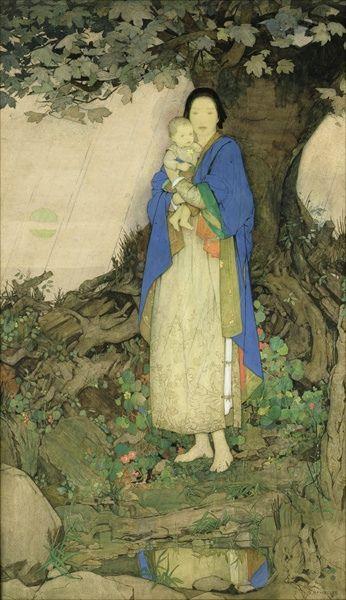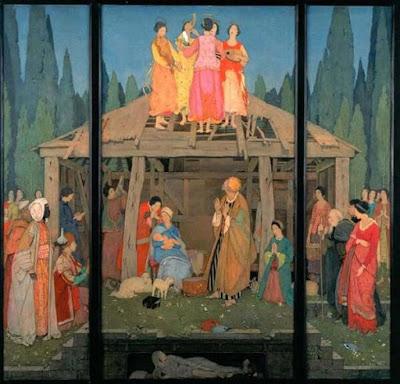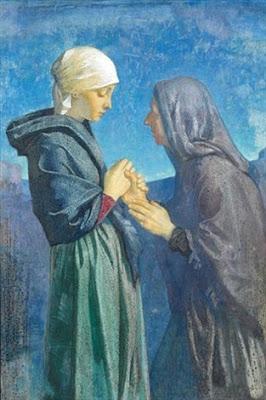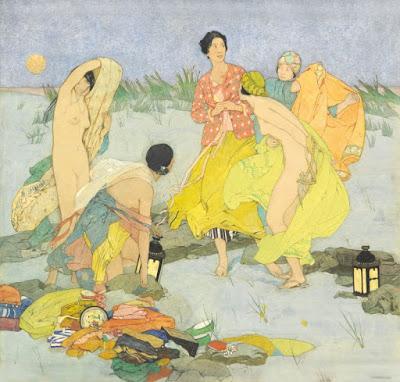
Mary (1918) Dorothy Webster Hawksley
From Bramwell Bronte's early Victorian nativity, I now bring you a very modern Mary from the last year of the First World War. That's what I love about doing Blogvent; I can spend a month just rambling back and forth in time looking at how different artists saw the same things at different ends of a century and beyond. I really love the delicate watercolour of this image and Mary's reflection in the puddle is far more lovely than necessary. The blue, the traditional color for the Virgin Mary due to the cost of lapis lazuli, ground up for paint, just leaps forward as it is so clear and vivid in among those dull browns and greens. The red inside her cloak reflects the red flowers in that wooded bank behind her and she and Jesus just blend together beautifully.
The Nativity
Dorothy Webster Hawksley (1884-1970) is my favorite artist, well at least for today. The airy beauty of her work brings light and color to her religious images. Look at the colourful choir of angels up on the rickety roof! Gorgeous! It makes a nice change for the Three Kings not to be the only pretty things in the image because everyone has dressed up for the occasion. Splendid!
Mary and Elizabeth (1939)
Even later in her career, her use of color is sublime. The contrast between her Mary and Elizabeth and Evelyn de Morgan's version of the same scene is interesting. Hawksley uses blue as a link between the women, one old, one young, both expecting babies. There is a look of concern from Elizabeth to Mary and they join hands in sisterhood.
Summer (1920s)
Hawksley's father made surgical instruments, and admired the works of John Ruskin. Her grandfather, Samuel Walters, had also been a painter and so when little Dorothy decided she wanted to become one the family didn't oppose her. She studied under the watercolourist Edward Clifford who had been a friend of Burne-Jones and Hawksley attended the Burne-Jones Memorial Exhibition in 1898 so it is tempting to see her willow-stem female figures as evolutions of Burne-Jones' own pale maidens. In the little I find written about her, comment is made about her unmarried state and female-centric scenes which may or may not be relevant but what is evident in her work is an appreciation for the beauty of the female figure, especially one with a dutch-doll black bob which I also appreciate. Whatever her reasons, I would like to find out more about the work of Dorothy Hawksley in 2018...See you for the finale tomorrow...

